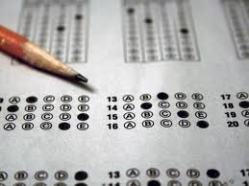No three letters of the alphabet strike more fear in the US college applicant than these three letters. In many ways, it represents much of what is wrong with the college application process. But let’s tackle some questions about it first.
1. What is the SAT and how does one pass it?
The SAT (formerly known as the Scholastic Aptitude Test is now known as the SAT Reasoning Test. The initials SAT don’t stand for anything anymore) is a 3 – 4 hour standardized test used by universities to qualify applicants. It has three sections: Critical Reading, Math, and Writing. Each section is scored on a scale of 200-800 (you don’t get a zero if get nothing right) and a perfect score is 2400 (800 + 800 + 800).
You don’t really “pass” the exam in the way that perhaps the UPCAT or ACET does. You take the exam, you get your scores and you submit them to the colleges you are applying to. They’ll decide how much weight to give your scores.
2. When is the SAT offered? How do I sign up for it?
The SAT is offered several times a year in testing centers all over the Philippines, usually in international schools. You sign up to take the test by going online at sat.collegeboard.org. The test is about $80.
3. If I’m unhappy with my result, can I take the exam again?
Yes, you can take it any number of times until you are satisfied with your score. However, I would not advise taking it more than two or three times. After a while, your score will settle and taking it more times will not appreciably raise (and might even lower) your score. A noted exception is if you take the exam cold the first time, do poorly (I prefer the word underperform), and then do some preparation. Your score should rise to the level of your ability then.
4. How do I prepare for the SAT?
As inexpensively as possible! But seriously, we here in the Philippines tend to over obsess with the SAT. The most important thing to remember that the SAT tests you on stuff that you already should know, i.e. stock knowledge. The Math section goes up to Algebra II and elementary geometry, no trig or precalc required. If you don’t know those subjects well, no amount of preparation will get you up to speed. The SAT is a problem solving test and the assumption is that you know your math (and critical reading and writing) well enough to solve problems. The best thing that test preparation will give you is an idea of what the questions will be like and give you some test taking skills. Don’t expect it (as most parents and students do) to suddenly teach you the algebra and geometry you’ve been neglecting all these years.

Study guides like these (found at Fully Booked and National Book Store) are good, fairly inexpensive ways to prepare for the SAT assuming you have the discipline to study by yourself
So how does one prepare…inexpensively? Getting a big study guide like the one put out by The College Board is ideal. This assumes though that you have the discipline to study by yourself. If not, then a review class might be better. At this point, I cannot recommend a particular review center. When my son took a review class, he was teaching THEM how to do the math problems.
5. How important are SAT scores in the admissions process?
They’re important but not nearly as important as most people like to think. The single most important factor in your application is your transcript: your grades and the rigor of your high school curriculum. Your SAT scores simply support or corroborate your grades. High grades in a tough curriculum will pull up middling SAT scores but high SAT scores will almost never pull up a mediocre transcript. Personally, I use SAT scores as a quick and dirty measuring stick to see what kind of chance an applicant has at a given college when making up the college application list. Don’t oversweat the SAT. Take it seriously but don’t overdo it. Don’t bother aiming for perfection thinking that a 2400 will make you a shoo in for any Ivy school. First of all, there is no such thing as a shoo in for any Ivies with their typical admission rates of less than 10%. These guys eat 2400s for breakfast and spit out the bones! Secondly, if you’re getting a 2400, don’t you deserve a better undergraduate education than the Ivies? Seriously?
More and more schools are now SAT optional which means that you no longer have to submit scores as part of your application but they will consider them if you do submit. For a list of these schools, and to see why the SAT is a pretty flawed test to begin with, go to http://www.fairtest.org.
6. When should I take the SAT?
As soon as you can! I prefer that students take it at least once in their junior year just to get a good benchmark and as an aid in the college search process. You can take it again your senior year, if needed. It would be absolutely great if you could get the SATs done completely by end of junior year with a set of scores you’re happy with. After all, you’ve got SAT Subject Tests to worry about senior year.
Wait! There’s more than ONE SAT Test????



[…] The SAT (philuscollegeadmissions.wordpress.com) […]